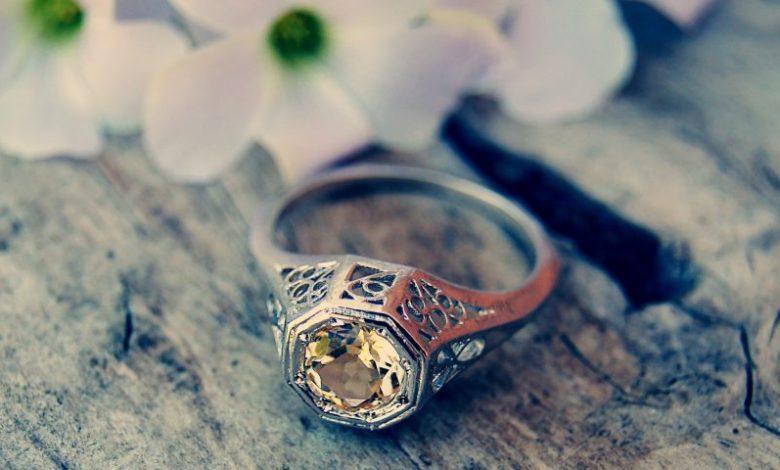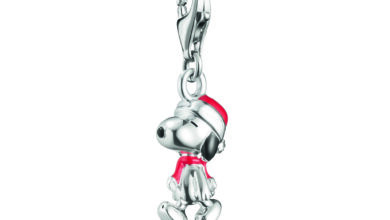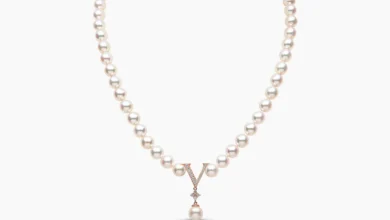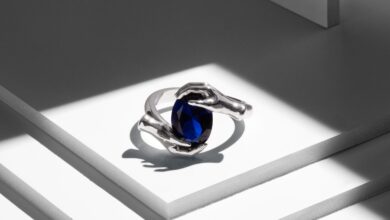The changing face of jewellery retail

Register to get 1 free article
Reveal the article below by registering for our email newsletter.
Want unlimited access? View Plans
Already have an account? Sign in
The world as we know it for jewellery is one of luxury, enticement and wonder – but the UK customer tends to prefer a very middle ground. With diamonds it’s nice and white, clean to the eye – G/H VS/SI – and for coloured gemstones it’s traditional, not too garish and somewhat subtle – the Diana ring or a simple halo design.
The explosion of TV shopping channels and online retailers have encouraged people to broaden their horizons in terms of seeking out more than the infamous top four and have made large, statement pieces more affordable and attainable than ever. Morganite, spinels and zircon – otherwise largely ignored by the retailers – are suddenly reinvented, fascinating jewels from far off places. Despite Tiffany originally marketing tanzanite, its popularity exploded after heavy exposure on shopping channels, resulting in even tiny pale coloured stones becoming desirable “because it’s tanzanite you know”.
The surge of online shopping has encouraged shoppers to expand their horizons, and their selling techniques are persuasive. Extended return periods and ‘try before you buy’ make people more comfortable with shelling out four figures from their living rooms or treating themselves to three or four pieces, which of course, they intend to return two or three. This clever marketing strategy is obviously golden for retailers as it can work to their advantage, boosting average order values and the number of units purchased. However, it can also negatively impact their business as it’s so much easier for the consumer to use it against them. Have a party coming up and need something to wear? Great, let’s just get something for that and send it back after. Oh, I managed to break it after only two outings? Never mind, I’ll just send it back for a refund.
The consumer has become so aware of the ‘faceless’ shopping experience with no fumbling for excuses to return something while standing in a shop or having awkward conversations about why a chain has broken. With the ability to sometimes leave aggressive and unpleasant feedback against the retailer, the customer merely sends it back knowing that most often they will be offered a full refund or exchange as it is simply easier for the company than trying to enforce its terms and conditions of sale.
At www.thefinejewellerycompany.com we make sure, and it is imperative that every detail is described in full. Accurate images are used for a fair representation of the piece and a sense of size can be attained by the customer. By offering this on each piece, along with excellent customer service, returns can be kept to a minimum. Some online jewellers are now even offering the opportunity to ‘try jewellery’ on your own hand, ear or neck by the use of sophisticated apps on your smartphone. Being as the most common complaint from online shoppers tends to be “it’s not as big as the picture!” it’s definitely something to bear in mind.
Another issue valuers are now facing are the rising numbers of jewellery pieces bought on cruise ships and cruise ship destinations. While the jewellery is often more exciting and flamboyant, it is frequently sold as “significantly cheaper than the high street” or with inflated expected replacement valuations. Unsuspecting tourists are lapping up these beautiful jewels and bringing them home with expectations of high resale values or valuation figures. Frequently these stones are heavily treated, synthetic or even imitation gems – Mystic Topaz is a popular example, with many buyers being led to believe that the magical colours are actually natural. It has also been seen that the ‘gold’ is in fact gold plated or so-called white gold is rhodium plated silver. This is proving difficult for jewellery valuers and subsequently insurance companies as their clients are adamant that their precious find is ultimately something else entirely. Clients prefer to believe what they’ve been told by an onboard salesperson than valuers who are specialists in their field and are frequently fully trained gemmologists able to identify even the most inconspicuous of treatments.
The UK jewellery taste is generally tamer and more subtle than many other places. Safer, more understated, despite the UK having some of the most exciting and talented designers anywhere in the world. For example, the Mediterranean countries, Dubai and the USA enjoy loud, vibrant and more cocktail style jewels. Bigger is often better and less emphasis is on the treatment a stone has had, or indeed what the gem is, and more about how it looks. The more sparkle, glamour and “bling” the better, and this is an excellent attitude to have in terms of design.
Walk past mesmerising shop windows, with store appeal to rival Cartier and Tiffany and you realise after a few minutes of browsing they are selling beautifully crafted sterling silver and cubic zirconia rope necklaces alongside fabulously intricate coral and diamond brooches. You are able to walk into a shop and point at something fabulous and they get it out for you to try on. Whether it’s £500 or £50,000 their enthusiasm for beauty is evident whatever the cost.
These showrooms rely more on footfall and physical touch than a screen and over informed presenters. Hopefully the UK will one day embrace the same admiration. Jewellery will once again be something that’s value is one of the heart not just of the wallet and instead of ‘classic’ and ‘core’ range designs, we will see more colour, life and imagination in our jewellery purchases.
By Rebecca Share, a gemologist and jewellery manager for www.thefinejewellerycompany.com based in Birmingham, the city renowned for its historic Jewellery Quarter.







